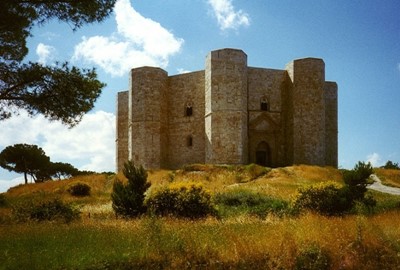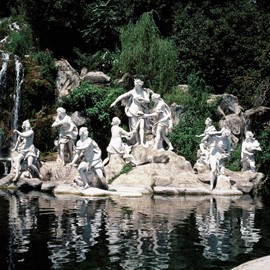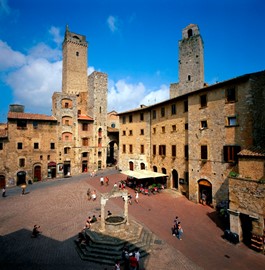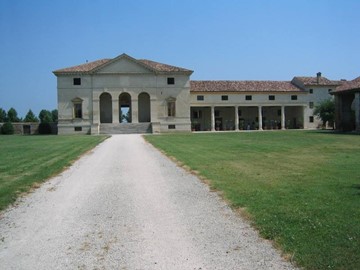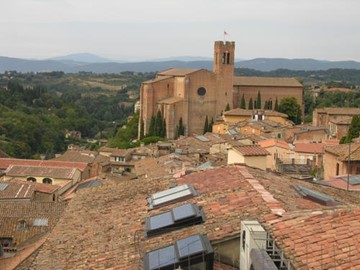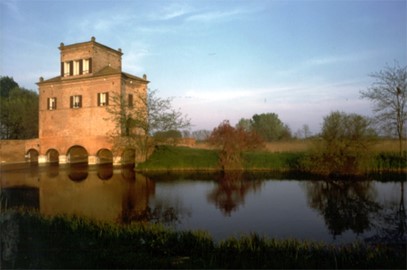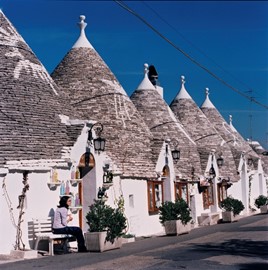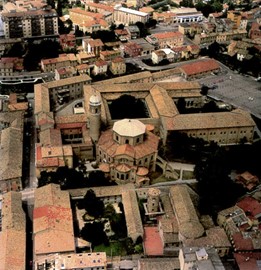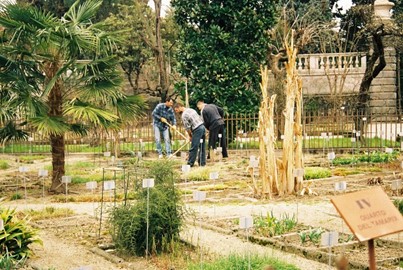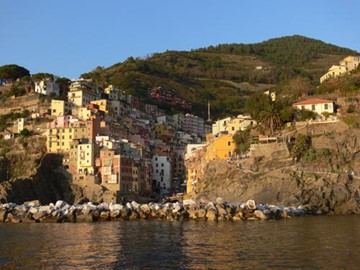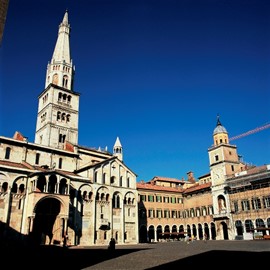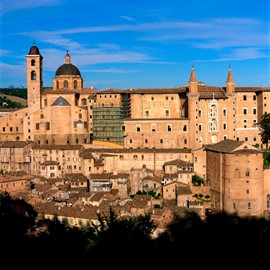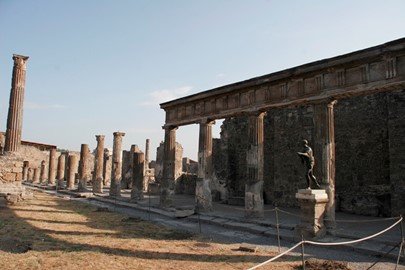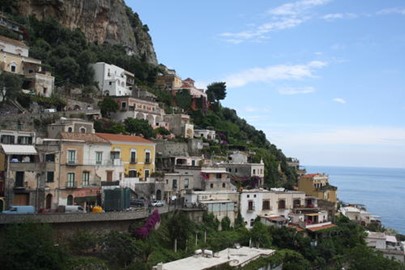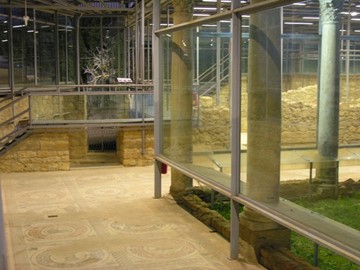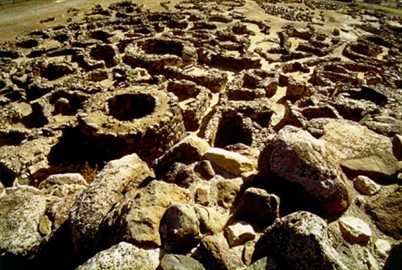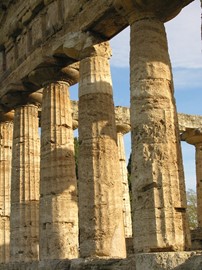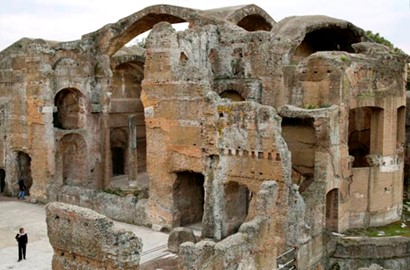region :: europe and north america
Rock Drawings in Valcamonica
The Rock Drawings in Valcamonica, a UNESCO World Heritage site in Italy, represent one of the world’s largest collections of prehistoric rock art. Spanning over 8,000 years, these engravings—etched into rock surfaces—depict scenes of hunting, farming, rituals, and daily life, offering a window into ancient human culture. This vast open-air gallery highlights the artistic and historical evolution of early societies in a striking natural setting.
Venice and its Lagoon
Venice and its Lagoon, a UNESCO World Heritage site in Italy, is an extraordinary city built on a network of islands within a shallow lagoon. Renowned for its unique urban layout, it features iconic canals, historic architecture like St. Mark’s Basilica, and grand palaces reflecting its past as a maritime power. This remarkable ensemble highlights centuries of engineering and cultural achievement in a fragile aquatic environment.
Castel del Monte
Castel del Monte, a UNESCO World Heritage site in Italy, is a striking 13th-century fortress renowned for its unique octagonal design and architectural precision. Built by Emperor Frederick II, this hilltop castle blends medieval military structure with Islamic and Gothic influences, featuring eight octagonal towers and a central courtyard. Its harmonious proportions and mysterious purpose—possibly as a hunting lodge or symbolic monument—highlight its historical and cultural importance.
Royal Palace at Caserta
The Royal Palace at Caserta, a UNESCO World Heritage site in Italy, is an opulent 18th-century Baroque residence built for the Bourbon kings of Naples. Renowned for its grand architecture, the palace boasts a vast layout with lavish interiors, including the ornate Throne Room, and is complemented by an expansive park featuring intricate fountains and cascading waterworks. This masterpiece exemplifies the era's royal splendor and innovative landscape design.
San Gimignano
San Gimignano, a UNESCO World Heritage site in Italy, is a medieval hilltop town renowned for its well-preserved tower houses, which earned it the nickname 'The Manhattan of the Middle Ages.' Its historic center features Gothic and Romanesque architecture, including the Collegiate Church with its striking frescoes and the Piazza della Cisterna. This Tuscan gem exemplifies a feudal society’s urban planning and cultural legacy, offering a glimpse into 13th- and 14th-century life.
Matera
Matera, a UNESCO World Heritage site in Italy, is renowned for its ancient cave dwellings, known as 'Sassi,' carved into the limestone cliffs. This unique urban landscape features a network of prehistoric homes, churches, and cisterns, showcasing a continuous human settlement from the Paleolithic era to today. Its historical significance and striking architecture highlight a remarkable adaptation to the rugged terrain.
Vicenza
Vicenza and the Palladian Villas of the Veneto, a UNESCO World Heritage site in Italy, exemplify the architectural genius of Andrea Palladio, a 16th-century Renaissance master. The site includes the city of Vicenza, renowned for its elegant palaces and public buildings like the Basilica Palladiana, and a collection of villas scattered across the Veneto region, showcasing Palladio’s innovative designs. These structures blend classical symmetry with functional beauty, influencing architectural styles worldwid... Read More
Siena
Siena, a UNESCO World Heritage site in Italy, is a stunning medieval city renowned for its well-preserved Gothic architecture and historic urban layout. Its iconic Piazza del Campo, a shell-shaped public square, serves as the heart of the city, hosting the famous Palio horse race. The Siena Cathedral, with its intricate black-and-white marble facade, exemplifies the city’s artistic heritage. This Tuscan gem reflects a rich history of civic pride and cultural achievement.
Crespi d'Adda
Crespi d’Adda, a UNESCO World Heritage site in Italy, is a well-preserved example of a 19th-century company town built for textile factory workers. Founded by the Crespi family, it features a planned layout with worker housing, a school, a church, and recreational facilities, all designed to reflect industrial-era social ideals. This intact historical village highlights the intersection of industrial innovation and paternalistic urban planning.
Ferrara
Ferrara, City of the Renaissance, a UNESCO World Heritage site in Italy, exemplifies Renaissance urban planning with its harmonious layout and architectural grandeur. The historic center features the imposing Este Castle, elegant palaces, and broad streets designed under the influence of the powerful Este family. Its well-preserved walls and cultural landmarks highlight a pivotal era of artistic and intellectual achievement.
Trulli of Alberobello
The Trulli of Alberobello, a UNESCO World Heritage site in Italy, are distinctive dry-stone huts with conical limestone roofs, exemplifying a unique prehistoric building technique. These whitewashed structures, clustered in a picturesque settlement, were originally constructed by peasants and farmers using local materials, reflecting a resourceful adaptation to the landscape. Recognized for their architectural and historical value, they offer a glimpse into traditional rural life and ingenuity.
Ravenna
The Early Christian Monuments of Ravenna, a UNESCO World Heritage site in Italy, exemplify exceptional artistic and architectural achievements from the 5th and 6th centuries. This collection of eight structures, including basilicas, a baptistery, and mausoleums, features stunning Byzantine mosaics that blend Roman and Eastern influences. Recognized for their historical and cultural value, these monuments reflect Ravenna’s role as a key center of early Christianity and imperial power.
Pienza
The Historic Centre of Pienza, a UNESCO World Heritage site in Italy, exemplifies Renaissance urban planning and architecture. Designed in the late 15th century by architect Bernardo Rossellino under Pope Pius II’s vision, this small Tuscan town features harmonious buildings, including the elegant Cathedral of Santa Maria Assunta and the Palazzo Piccolomini. Its preserved layout and structures highlight an early application of humanist principles in city design.
Verona
Verona, a UNESCO World Heritage site in Italy, is a historic city renowned for its well-preserved Roman and medieval architecture. Highlights include the ancient Roman Arena, still used for performances, and the picturesque Ponte Pietra bridge spanning the Adige River. Its charming streets, lined with elegant palaces and churches, reflect a rich cultural heritage shaped by centuries of artistic and historical development.
Botanical Garden, Padua
The Botanical Garden in Padua, a UNESCO World Heritage site in Italy, is renowned as the world’s oldest university botanical garden, established in 1545. It features a historic circular layout with diverse plant collections, including rare and medicinal species, housed in elegant greenhouses and open beds. This living museum highlights centuries of botanical research and education, reflecting its enduring scientific and cultural legacy.
Cinque Terre
Cinque Terre, a UNESCO World Heritage site in Italy, is renowned for its picturesque coastal villages perched along rugged cliffs overlooking the Ligurian Sea. This cultural landscape features colorful houses, terraced vineyards, and olive groves, shaped by centuries of human effort to cultivate steep terrain. Connected by scenic trails and a historic railway, it exemplifies a harmonious blend of nature and traditional Mediterranean life.
Modena
Modena, a UNESCO World Heritage site in Italy, is renowned for its Romanesque cathedral, Torre Civica, and Piazza Grande, which together exemplify medieval architecture and urban planning. The 12th-century Duomo, with its intricate stone carvings, stands as a testament to the city’s historical and artistic legacy. This well-preserved ensemble highlights Modena’s cultural importance and its role as a center of civic life in the Emilia-Romagna region.
Urbino
The Historic Centre of Urbino, a UNESCO World Heritage site in Italy, exemplifies a masterpiece of Renaissance urban planning and architecture. This well-preserved hilltop town features the grand Palazzo Ducale, a symbol of cultural and artistic achievement, alongside charming streets and structures reflecting the ideals of the Italian Renaissance. Celebrated for its historical significance, Urbino offers a glimpse into the intellectual and artistic legacy of the 15th century.
Pompei
The UNESCO World Heritage site encompassing Pompeii, Herculaneum, and Torre Annunziata in Italy preserves an extraordinary snapshot of ancient Roman life, frozen in time by the eruption of Mount Vesuvius in 79 AD. Pompeii and Herculaneum, buried under volcanic ash and pumice, reveal remarkably intact urban centers with frescoed villas, public baths, and amphitheaters, showcasing Roman architecture and daily life. Nearby Torre Annunziata complements these sites with its own archaeological treasures, includin... Read More
Costiera Amalfitana
Costiera Amalfitana, a UNESCO World Heritage site in Italy, is a stunning coastal region renowned for its dramatic cliffs, vibrant Mediterranean villages, and terraced vineyards cascading toward the sea. This picturesque landscape features historic towns like Amalfi and Positano, with their colorful architecture and medieval charm, seamlessly blending natural beauty and cultural heritage. Recognized for its unique scenery and traditional land use, it exemplifies centuries of human harmony with a rugged envi... Read More
Agrigento
Agrigento, a UNESCO World Heritage site in Italy, is renowned for its exceptionally preserved ancient Greek temples, part of the Valley of the Temples. This archaeological treasure showcases Doric architecture from the 5th century BC, including the iconic Temple of Concordia, set against a picturesque Mediterranean backdrop. The site highlights the cultural and historical legacy of Magna Graecia, reflecting the sophistication of ancient Greek civilization in Sicily.
Villa Romana del Casale
Villa Romana del Casale, a UNESCO World Heritage site in Italy, is a luxurious Roman villa renowned for its extensive and well-preserved mosaic floors. Dating to the 4th century AD, this grand estate features intricate artwork depicting mythological scenes, hunting expeditions, and daily life, showcasing exceptional Roman craftsmanship. The villa’s elaborate design, including bath complexes and courtyards, highlights its historical significance as a testament to the wealth and culture of the late Roman Empi... Read More
Su Nuraxi di Barumini
Su Nuraxi di Barumini, a UNESCO World Heritage site in Italy, is a striking example of a Bronze Age nuraghe, a unique type of stone tower built by the Nuragic civilization. This well-preserved complex features a central conical tower surrounded by smaller structures and a village, showcasing ancient engineering and defensive architecture. Recognized for its historical and archaeological value, it offers insight into the prehistoric cultures of the Mediterranean.
Cilento and Vallo di Diano
Cilento and Vallo di Diano National Park, a UNESCO World Heritage site in Italy, is a striking blend of natural beauty and cultural heritage. This coastal region features rugged mountains, lush valleys, and ancient Greek and Roman archaeological sites, including the renowned ruins of Paestum and Velia. Its historical significance is enhanced by medieval villages and the Certosa di Padula, a grand Carthusian monastery, reflecting a rich legacy of human settlement and adaptation to the landscape.
Villa Adriana
Villa Adriana, a UNESCO World Heritage site in Italy, is an extraordinary Roman architectural complex built in the 2nd century AD as a retreat for Emperor Hadrian. This sprawling estate blends innovative design with elements inspired by Greek, Egyptian, and Roman cultures, featuring palaces, theaters, baths, and gardens. Renowned for its sophisticated layout and engineering, including water systems and decorative structures, it exemplifies imperial luxury and the artistic vision of antiquity.


